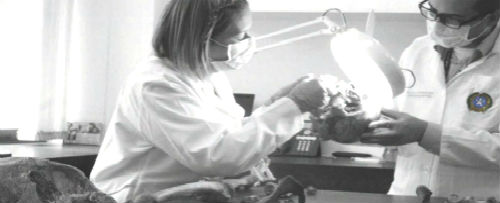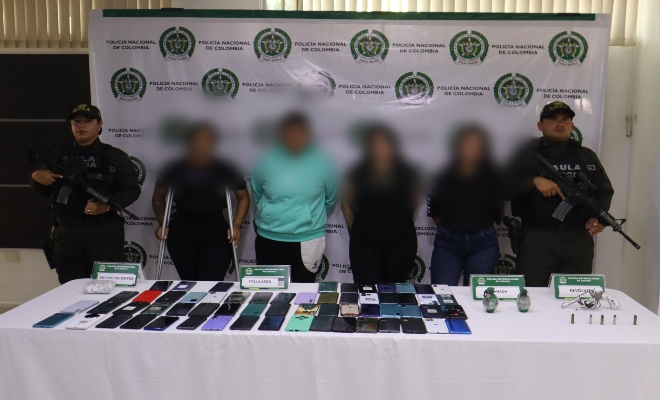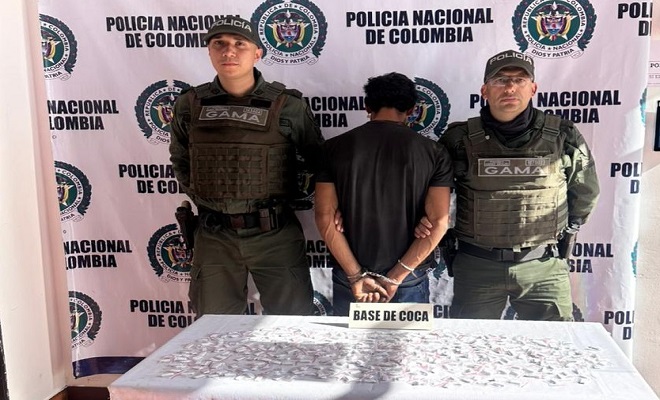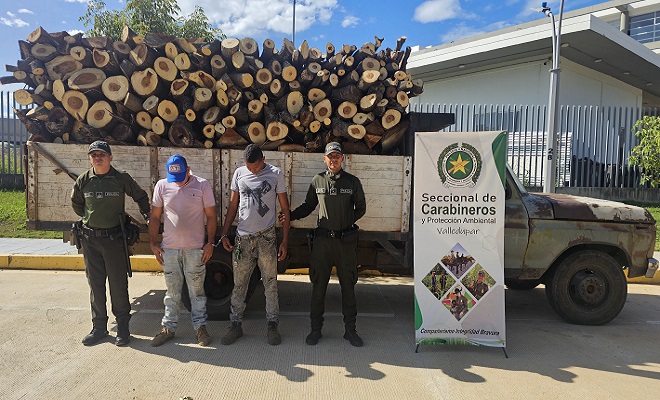En pleno bosque, en medio de la manigua, lo primero que apareció de entre las entrañas de la tierra amarillenta fue un cráneo triturado y, luego, uno más, partido en cuatro pedazos. Segundos más tarde quedaron al descubierto los restos de un niño y los de una joven. Pero faltaba más tristeza: unos huesos no eran humanos, eran los de un perro, la mascota de la familia masacrada por la guerra y condenada a una tumba carcomida por la maleza y el olvido.
Este es el rostro del conflicto armado que a diario desentierran los expertos del Laboratorio de Identificación Humana Especializada, creado hace diez años por la Policía Nacional para contribuir a la ubicación de fosas ilegales e identificación de víctimas, el cual será clave en el posconflicto para hallar a más de 27.000 desaparecidos.
Este equipo, integrado por expertos en antropología, genética, odontología, química y balística, ha efectuado más de 3.200 diligencias de búsqueda en todo el territorio nacional y recuperado 1.700 cadáveres, entre ellos el de Carlos Castaño Gil, el otrora poderoso jefe de las Autodefensas Unidas de Colombia, organización responsable del desplazamiento de más de un millón de colombianos. También fue el encargado de encontrar las 11 víctimas del llamado ‘Monstruo de Monserrate’, en Bogotá.
Esta capacidad humana y científica no solo permite recuperar los cuerpos. También los identifica plenamente y los entrega a sus familias, que por años vivieron la pesadilla de la incertidumbre por no conocer el paradero de sus seres queridos. Eso les permite hacer el duelo y mitigar en algo el dolor que les dejó la barbarie. Cada detalle es fundamental en esta noble tarea. Con la ayuda de palustres, pinceles y una paciencia infinita, de la tierra brotan escapularios, pedazos de camisas, cinturones, manillas, zapatos, billeteras, medallas religiosas… El objetivo, ponerles rostro, un nombre y un apellido a estos elementos convertidos en testigos silenciosos de la crueldad humana.
De cara al posconflicto, el Laboratorio se viene preparando para seguir contribuyendo a las crecientes demandas de colombianos que reclaman verdad, justicia y reparación. Por eso, se creó la plataforma SIGAN (Sistema de Información Geográfica en Antropología Forense), que permite realizar una planificación adecuada de las diligencias de exhumación, teniendo en cuenta desde las condiciones climáticas hasta las acciones de alteración del orden público.
Su propósito es facilitar la construcción y resolución de hipótesis de identificación en el laboratorio, pues hace accesible la información de campo al antropólogo que está liderando el análisis del cadáver esqueletizado, siendo, además, una herramienta que garantiza el derecho de las víctimas a conocer el estado de avance de los procedimientos de identificación, por medio de la consulta en la web. Actualmente este aplicativo se encuentra en su fase piloto de alimentación, esperando contar con su plena operación y servicio a la ciudadanía mediante un link ubicado en la página de la Policía Nacional.
Nuestras Historias 50 Crónicas de Reconciliación.
A Laboratory to find the missing of the war
In the woods, in the middle of the jungle, the first thing that came from the bowels of the earth was a yellowed skull crushed and then appeared one more, split into four pieces. Seconds later were uncovered the remains of a boy and a girl. But there was still more sadness to this some bones were not actually human they were of a dog, the family pet was butchered by the war and sentenced to a tomb eaten by weeds and left to be forgotten.
This is the face of an armed conflict that daily is uncovered by experts of the Laboratory Specialized in Human Identification, created ten years ago by the National Police to assist in the location of illegal graves and identify victims, which will be key in the postconflict to find more than 27,000 missing.
This team, composed of experts in anthropology, genetics, dentistry, chemistry and ballistics, has made more than 3,200 search procedures throughout the national territory and recovered 1,700 bodies, including Carlos Castano Gil, the once powerful leader of the Autodefensas Unidas de Colombia, an organization responsible for the displacement of more than a million Colombians. He was also responsible for finding the 11 victims of the so-called ‘Monster of Monserrate’, in Bogotá.
This human and scientific capacity not only to retrieve the bodies but also identifies and delivers them to their families, who for years lived the nightmare of uncertainty for not knowing the whereabouts of their loved ones. That allows them to grieve and alleviate some of the pain that was left by the barbarism. Every detail is critical in this noble task. With the help of trowels, brushes and infinite patience, from the earth sprouts scapulars, pieces of shirts, belts, bracelets, shoes, wallets, religious medals ... The goal is to give them a face, a name and a lastname to these elements turned into silent witnesses of human cruelty.
Looking into the post-conflict, the Laboratory has been preparing to continue contributing to the growing demands of Colombians who demand truth, justice and reparation. Thats why the creation of the platform GISFA (Geographic Information System in Forensic Anthropology), which allows proper planning of the exhumation, taking into account from weather conditions to actions disturbing public order.
Its purpose is to facilitate the construction and resolution of hypothesis of identification in the laboratory, it makes information in field accessible to the anthropologist who is leading the analysis of the skeletonized corpse, also being a tool that guarantees the right of victims to know the progress of the identification procedures, through consultation on the web. Currently this application is in its pilot phase, hoping to have its full operation and service to the public through a link located on the site of the National Police.
Consult the last digital version our book
Nuestras Historias 50 reconciliation chronicles





